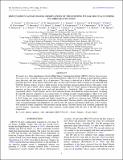| dc.contributor.author | Younes, G. | |
| dc.contributor.author | Kouveliotou, C. | |
| dc.contributor.author | Grefenstette, B. W. | |
| dc.contributor.author | Tomsick, J. A. | |
| dc.contributor.author | Tennant, A. | |
| dc.contributor.author | Finger, M. H. | |
| dc.contributor.author | Pottschmidt, K. | |
| dc.contributor.author | Bhalerao, V. | |
| dc.contributor.author | Boggs, S. E. | |
| dc.contributor.author | Boirin, L. | |
| dc.contributor.author | Chakrabarty, D. | |
| dc.contributor.author | Christensen, F. E. | |
| dc.contributor.author | Craig, W. W. | |
| dc.contributor.author | Degenaar, N. | |
| dc.contributor.author | Fabian, A. C. | |
| dc.contributor.author | Gandhi, P. | |
| dc.contributor.author | Hailey, C. J. | |
| dc.contributor.author | Harrison, F. A. | |
| dc.contributor.author | Kennea, Jamie A. | |
| dc.contributor.author | Miller, J. M. | |
| dc.contributor.author | Stern, D. | |
| dc.contributor.author | Zhang, W. W. | |
| dc.contributor.author | Chakrabarty, Deepto | |
| dc.contributor.author | Furst, F. | |
| dc.contributor.author | Gogus, E. | |
| dc.date.accessioned | 2015-09-03T18:35:11Z | |
| dc.date.available | 2015-09-03T18:35:11Z | |
| dc.date.issued | 2015-04 | |
| dc.date.submitted | 2014-12 | |
| dc.identifier.issn | 1538-4357 | |
| dc.identifier.issn | 0004-637X | |
| dc.identifier.uri | http://hdl.handle.net/1721.1/98366 | |
| dc.description.abstract | We report on a 10 ks simultaneous Chandra/High Energy Transmission Grating (HETG)–Nuclear Spectroscopic Telescope Array (NuSTAR) observation of the Bursting Pulsar, GRO J1744-28, during its third detected outburst since discovery and after nearly 18 yr of quiescence. The source is detected up to 60 keV with an Eddington persistent flux level. Seven bursts, followed by dips, are seen with Chandra, three of which are also detected with NuSTAR. Timing analysis reveals a slight increase in the persistent emission pulsed fraction with energy (from 10% to 15%) up to 10 keV, above which it remains constant. The 0.5–70 keV spectra of the persistent and dip emission are the same within errors and well described by a blackbody (BB), a power-law (PL) with an exponential rolloff, a 10 keV feature, and a 6.7 keV emission feature, all modified by neutral absorption. Assuming that the BB emission originates in an accretion disk, we estimate its inner (magnetospheric) radius to be about 4 × 10[superscript 7] cm, which translates to a surface dipole field B ≈ 9 × 10[superscript 10] G. The Chandra/HETG spectrum resolves the 6.7 keV feature into (quasi-)neutral and highly ionized Fe xxv and Fe xxvi emission lines. XSTAR modeling shows these lines to also emanate from a truncated accretion disk. The burst spectra, with a peak flux more than an order of magnitude higher than Eddington, are well fit with a PL with an exponential rolloff and a 10 keV feature, with similar fit values compared to the persistent and dip spectra. The burst spectra lack a thermal component and any Fe features. Anisotropic (beamed) burst emission would explain both the lack of the BB and any Fe components. | en_US |
| dc.language.iso | en_US | |
| dc.publisher | IOP Publishing | en_US |
| dc.relation.isversionof | http://dx.doi.org/10.1088/0004-637x/804/1/43 | en_US |
| dc.rights | Article is made available in accordance with the publisher's policy and may be subject to US copyright law. Please refer to the publisher's site for terms of use. | en_US |
| dc.source | IOP Publishing | en_US |
| dc.title | SIMULTANEOUS NuSTAR/CHANDRA OBSERVATIONS OF THE BURSTING PULSAR GRO J1744-28 DURING ITS THIRD REACTIVATION | en_US |
| dc.type | Article | en_US |
| dc.identifier.citation | Younes, G., C. Kouveliotou, B. W. Grefenstette, J. A. Tomsick, A. Tennant, M. H. Finger, F. Fürst, et al. “SIMULTANEOUS NuSTAR/CHANDRA OBSERVATIONS OF THE BURSTING PULSAR GRO J1744-28 DURING ITS THIRD REACTIVATION.” The Astrophysical Journal 804, no. 1 (April 29, 2015): 43. © 2015 The American Astronomical Society | en_US |
| dc.contributor.department | Massachusetts Institute of Technology. Department of Physics | en_US |
| dc.contributor.department | MIT Kavli Institute for Astrophysics and Space Research | en_US |
| dc.contributor.mitauthor | Chakrabarty, Deepto | en_US |
| dc.relation.journal | The Astrophysical Journal | en_US |
| dc.eprint.version | Final published version | en_US |
| dc.type.uri | http://purl.org/eprint/type/JournalArticle | en_US |
| eprint.status | http://purl.org/eprint/status/PeerReviewed | en_US |
| dspace.orderedauthors | Younes, G.; Kouveliotou, C.; Grefenstette, B. W.; Tomsick, J. A.; Tennant, A.; Finger, M. H.; Fürst, F.; Pottschmidt, K.; Bhalerao, V.; Boggs, S. E.; Boirin, L.; Chakrabarty, D.; Christensen, F. E.; Craig, W. W.; Degenaar, N.; Fabian, A. C.; Gandhi, P.; Göğüş, E.; Hailey, C. J.; Harrison, F. A.; Kennea, J. A.; Miller, J. M.; Stern, D.; Zhang, W. W. | en_US |
| dc.identifier.orcid | https://orcid.org/0000-0001-8804-8946 | |
| mit.license | PUBLISHER_POLICY | en_US |
| mit.metadata.status | Complete | |
